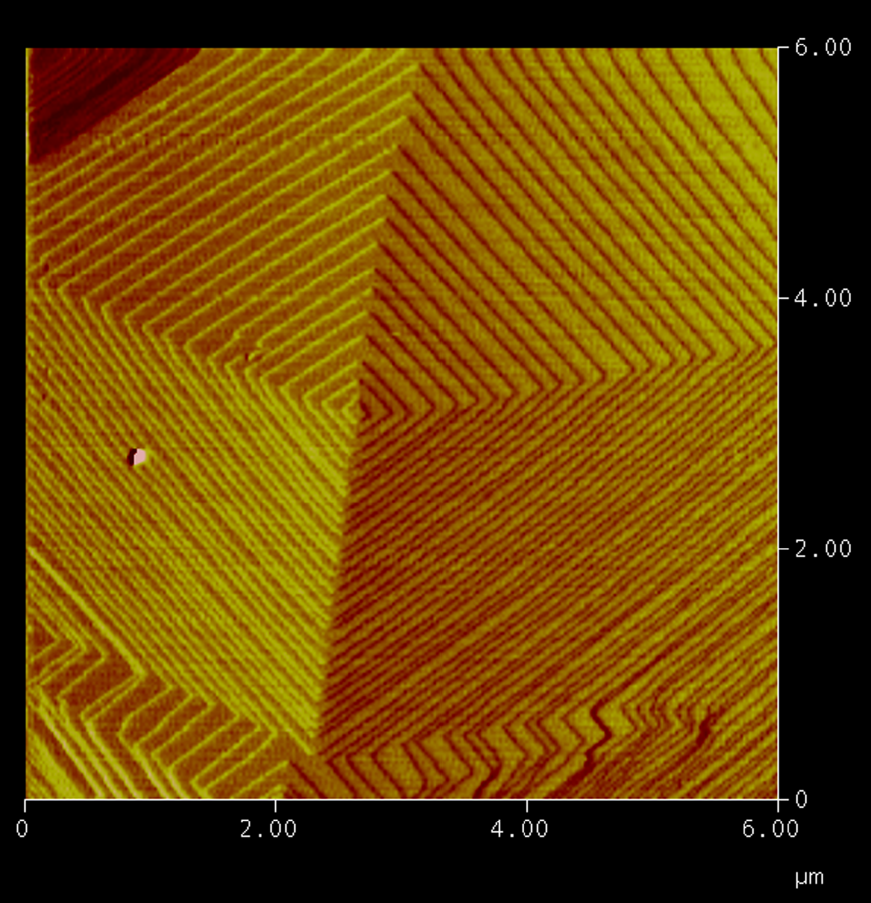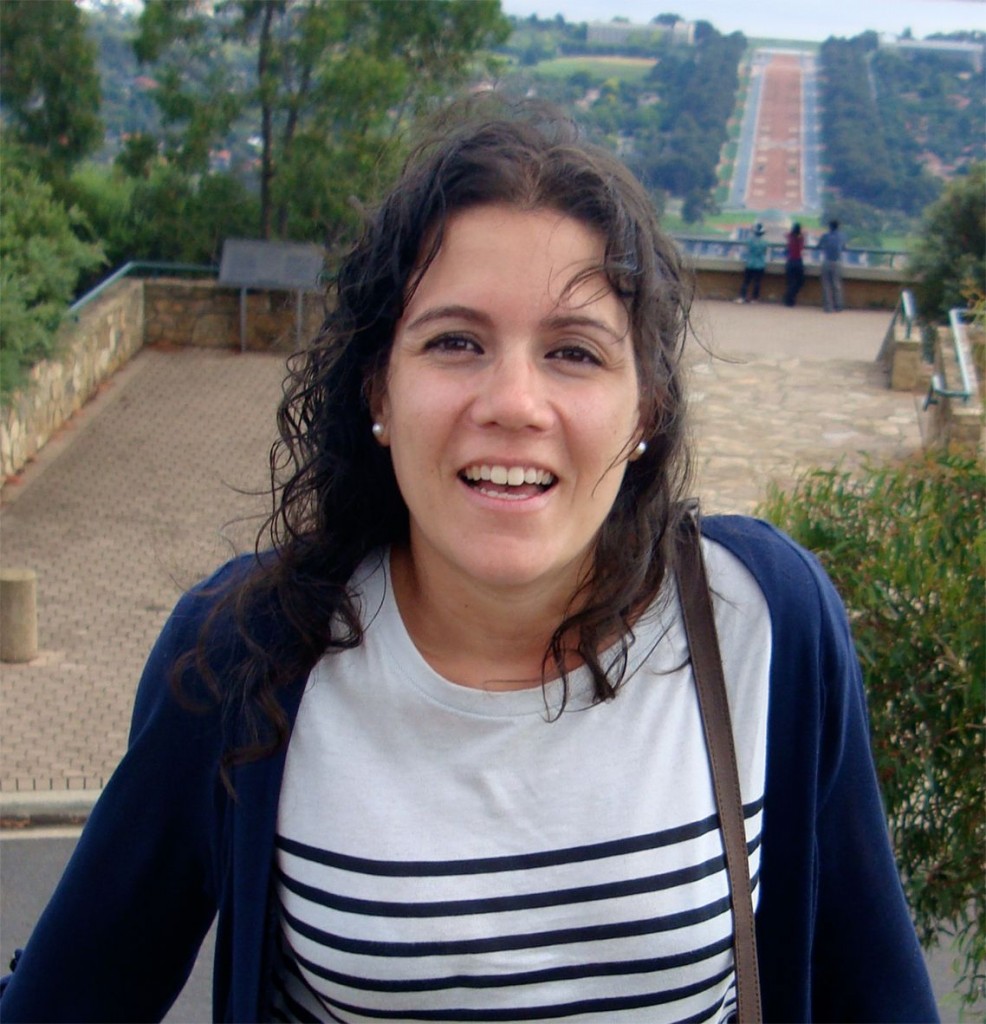GeoTalk is a regular feature highlighting early career researchers and their work. Today we’re talking to Encarnación Ruiz-Agudo whose specialty lies in crystal growth and dissolution – the key to how rocks tell their stories!
First, could you introduce yourself and let us know a bit about your current research? Also, what sparked your interest in crystallography and mineralogy?
My name is Encarnación Ruiz-Agudo, and I am currently working in the Department of Mineralogy and Petrology of the University of Granada (Granada, Spain), as research fellow. During my career, I have performed active research in a number of topics. My PhD research, under the supervision of Prof. Carlos Manuel Rodríguez Navarro, was aimed at gaining a better understanding of the effects of organic compounds on the crystallisation of soluble salts such as sodium and magnesium sulphate, and on sodium nitrate as a possible means of protecting ornamental stone against salt damage. With this in mind, I studied the physical and chemical processes causing the damage to calcitic stone materials, and how some organic compounds can modify such processes. I also investigated other mechanisms of damage to the built cultural heritage, such as gypsum crust formation, and conservation strategies that can be employed to protect them, such as the use and design of conservation lime-based mortars.
My postdoctoral research began when I joined the research group of Prof. Andrew Putnis(Institute für Mineralogie, University of Münster, Germany). I was awarded a two-year Marie Curie contract in this group within the European Initial Training Network, DELTAMIN. There, I conducted studies in situ – and at the nanoscale – using Atomic Force Microscopy (AFM) to investigate the chemical mechanisms that cause salt damage, specifically the processes of carbonate dissolution in the presence of electrolytes and organic compounds i. During my time there, I gained expertise in geochemical modelling as well as in the use of in situ AFM to obtain kinetic and mechanistic information on mineral growth and dissolution processes. My main focus: the nanoscale processes during the initial stages of mineral replacement and how epitaxy (structural matching at the molecular scale) between parent and product phases controls the coupling between dissolution and precipitation.
Earlier this year, your received an EGU Arne Richter Award for Outstanding Young Scientists for your “ground-breaking work on the structure of mineral surfaces, on fluid-mineral interaction and on the influence of organic and inorganic additives on the growth of crystals in multicomponent aqueous solutions”. Could you summarise in simple terms the research you have done in this area?
I studied the growth and dissolution of carbonates and silicates, and the effect of electrolytes and organic compounds on these processes. These studies have been performed mostly in situ and at the nanoscale using Atomic Force Microscopy and have opened the possibility of a new understanding of very diverse phenomena in geochemistry. and demonstrates the need for the inclusion of the effects of “foreign” molecules on the ions building the mineral when developing predictive models that describe crystal growth and dissolution in complex systems, such as those we find in nature.
The results of my research have provided evidence that supports a dissolution-precipitation mechanism for the formation of altered layers on the surfaces of minerals. This is critical as these altered layers may have a significant effect on the reactivity of these minerals and likely glasses, and help explain the apparent discrepancy – in orders of magnitude – between field and laboratory dissolution rates.

An atomic force microscopy (AFM) picture of a growth spiral, which developed on a calcite (CaCO3) surface during growth – pretty cool eh?
What is the wider importance of your research work?
My results so far are inapplicable to a wide range of fields including: cultural heritage conservation, biomineralisation, medicine, CO2 sequestration and the oil and cement industry, where mineral-electrolyte interactions and replacement reactions are of paramount importance. The research performed in some of the topics described above has given rise to the patent “Binder for CO2 sequestration: A manufacture method by selection, purification and optimization of carbide lime, and binders of environmental activity”, of which I am one of the inventors. This demonstrates the practical applications of my accomplishments, particularly since it is actually being exploited by a Spanish company!
As this interview is being conducted, you are on maternity leave. What advice would you have for young female scientists wondering how to balance their research work with starting a family?
I think it is a really tough work and I am still learning how to do it so I cannot give much advice on that. I believe that having support from your partner and from your work environment is critical. I think that women with a family and a research career must be prepared to work hard almost 24 hours a day, but I think it is doable if you like your job!
Last but not the least, what are your future research plans?
In the future, I would like to continue performing active research in this field at the University of Granada. I would also like to start a new research line relating to the mechanisms of element incorporation into minerals from aqueous solutions, with the aim of gaining a better understanding of environmental proxies. Our ability to understand how past climate evolves with time, and thus to predict future climate change, depends on being able to comprehend mechanisms and responses of the mineral, with respect to ion incorporation and changes in its growth environment. Furthermore, the same understanding is needed to control processes of importance to industry and society in general, such as the removal of toxic metals from polluted environments. The broad applicability of this research to urgent environmental and technological problems makes it of direct relevance to both public and private sectors.
If you’d like to suggest a scientist for an interview, please contact Sara Mynott.

